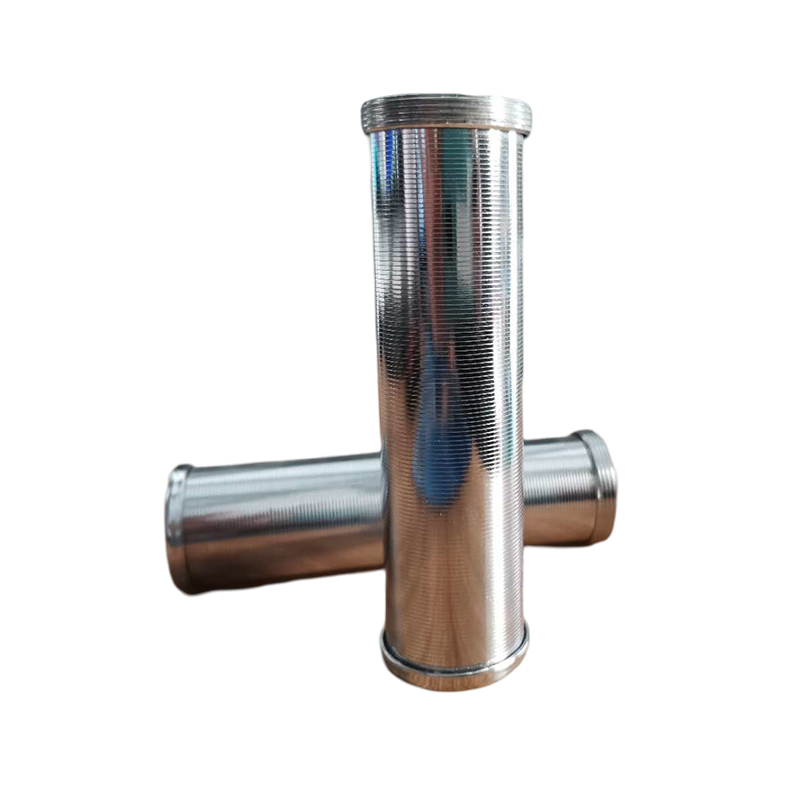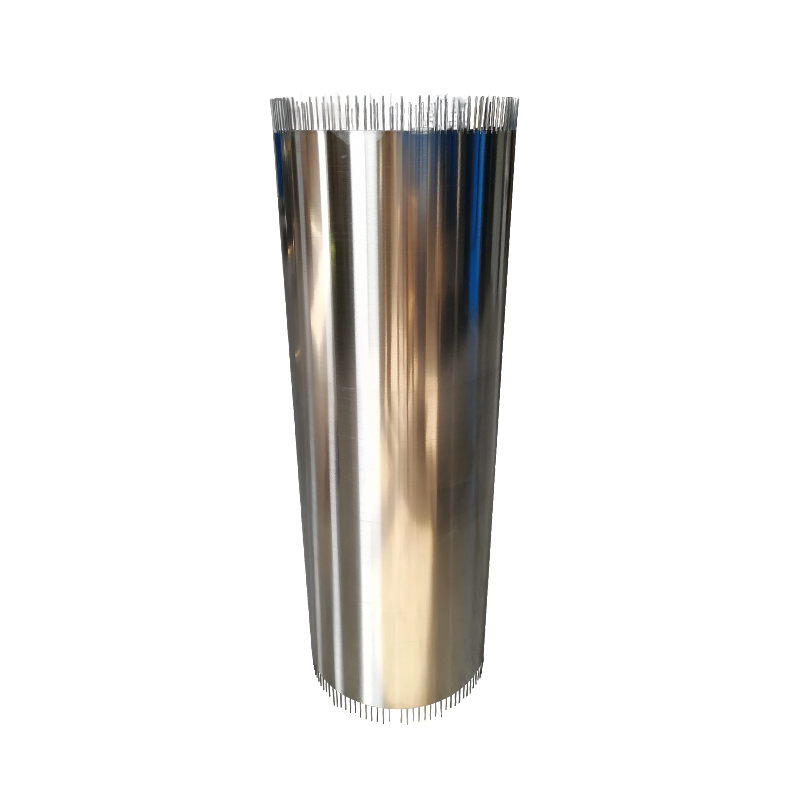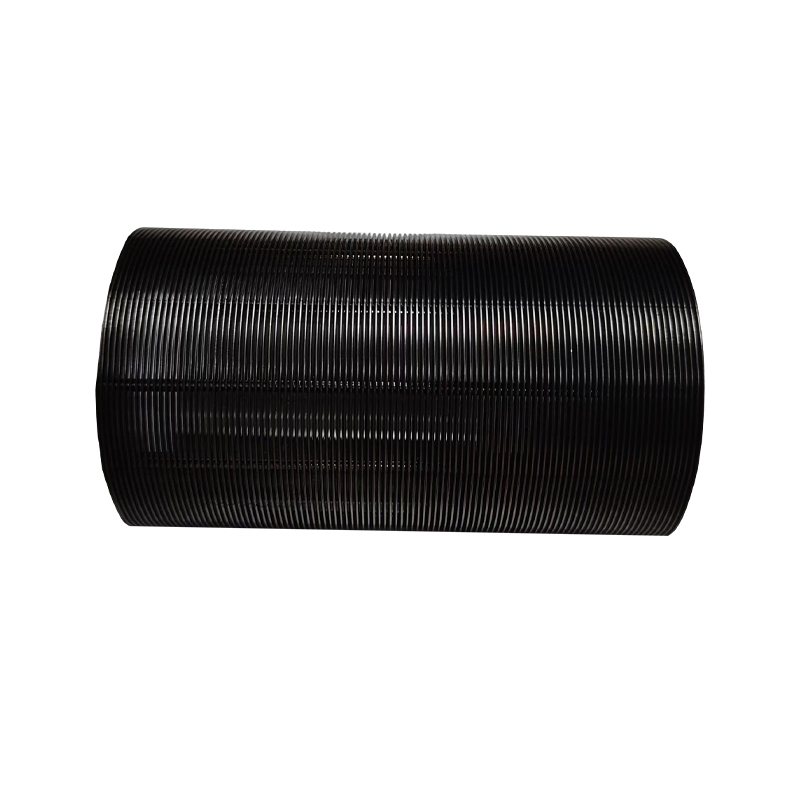How does dry and wet separation ensure efficient solid-liquid separation?
Release Time : 2025-06-12
In modern agriculture and livestock and poultry waste treatment, efficient treatment of farmyard manure has become an important link in improving resource utilization and realizing ecological circular agriculture. Among them, solid-liquid separation, as a key step in preliminary treatment, directly affects the effects of subsequent composting, fermentation and liquid fertilizer utilization. And dry and wet separation plays an irreplaceable role in the solid-liquid separation process with its stable structure and efficient operation.
1. Wedge screen: the key to efficient filtration
The core of dry and wet separation lies in its filter medium-wedge screen. The screen is composed of longitudinal support rods and transverse contour lines to form a unique V-shaped cross-section structure. This design not only enhances the overall strength of the screen, but also effectively avoids the common clogging problem of traditional filters.
When processing farmyard manure containing a large amount of organic matter and impurities, the particles in the material are easily stuck between the screen holes, resulting in clogging of the screen and reduced efficiency. The wedge screen, through its continuous gap design, allows water to enter the screen at a lower speed, thereby reducing impact force and improving filtration efficiency. At the same time, this structure also makes it easier for solid particles to slide or be discharged, preventing blockage caused by accumulation.
2. Low flow rate and high flux: improve separation efficiency
During the operation of dry and wet separation, the material keeps rolling and moving with the rotation of the drum, and the liquid part is quickly discharged through the screen. Since the wedge-shaped screen has a larger opening area, the flow rate of water passing through the screen is relatively low, which reduces the impact on the screen and also improves the drainage capacity per unit time.
In addition, this low flow rate design can effectively prevent fine particles such as sand from forcibly entering the screen gap under high pressure, thereby affecting the filtration accuracy and service life. Through the reasonable control of water flow and particle movement, dry and wet separation can significantly improve the overall efficiency of solid-liquid separation while ensuring the filtration quality.
3. Strong anti-clogging performance: adapt to complex material environment
Farmyard manure usually contains a large amount of straw, manure residue, grass clippings and other debris, which puts higher requirements on the anti-clogging performance of the screen. Traditional flat screens or ordinary round hole screens are often prone to clogging when facing such complex materials, resulting in frequent equipment shutdowns for cleaning, affecting production efficiency.
The dry and wet separation using wedge-shaped screens, due to its unique V-shaped intersection structure, is not easy to retain materials when passing through the screen surface. Even if there are larger particles, they can automatically slide down with the rotation of the drum. This self-cleaning ability greatly reduces the frequency of manual maintenance and improves the continuous operation stability of the equipment.
4. Modular design: easy to maintain and replace
Modern dry and wet separation mostly adopts modular design. The screen can be disassembled and replaced separately. Users can choose screens with different apertures according to actual processing needs to adapt to different material characteristics. For example, when processing pig manure with a high water content, a screen with a slightly larger aperture can be selected to speed up drainage; when processing more viscous materials such as cow manure or chicken manure, a finer screen can be selected to obtain better solid-liquid separation.
In addition, the overall structure of dry and wet separation is compact and easy to install in farms, organic fertilizer processing plants and other places. It is particularly suitable for small and medium-sized farmers and centralized processing stations.
5. Environmental protection and energy saving: Assisting the development of green agriculture
Dry and wet separation not only achieves efficient solid-liquid separation, but also helps promote the resource utilization of agricultural waste. The solid part after screening can be used for composting or making organic fertilizer, and the liquid part can be further used for biogas fermentation or irrigation and fertilization. This process not only reduces environmental pollution, but also realizes the recycling of resources, which is in line with the current development direction of green agriculture.
In summary, the key to dry and wet separation's efficient solid-liquid separation in farmyard manure treatment lies in its wedge-shaped screen design. Through reasonable structural layout, optimized fluid channels and good anti-blocking performance, dry and wet separation not only improves separation efficiency, but also extends the service life of the equipment and reduces maintenance costs.
1. Wedge screen: the key to efficient filtration
The core of dry and wet separation lies in its filter medium-wedge screen. The screen is composed of longitudinal support rods and transverse contour lines to form a unique V-shaped cross-section structure. This design not only enhances the overall strength of the screen, but also effectively avoids the common clogging problem of traditional filters.
When processing farmyard manure containing a large amount of organic matter and impurities, the particles in the material are easily stuck between the screen holes, resulting in clogging of the screen and reduced efficiency. The wedge screen, through its continuous gap design, allows water to enter the screen at a lower speed, thereby reducing impact force and improving filtration efficiency. At the same time, this structure also makes it easier for solid particles to slide or be discharged, preventing blockage caused by accumulation.
2. Low flow rate and high flux: improve separation efficiency
During the operation of dry and wet separation, the material keeps rolling and moving with the rotation of the drum, and the liquid part is quickly discharged through the screen. Since the wedge-shaped screen has a larger opening area, the flow rate of water passing through the screen is relatively low, which reduces the impact on the screen and also improves the drainage capacity per unit time.
In addition, this low flow rate design can effectively prevent fine particles such as sand from forcibly entering the screen gap under high pressure, thereby affecting the filtration accuracy and service life. Through the reasonable control of water flow and particle movement, dry and wet separation can significantly improve the overall efficiency of solid-liquid separation while ensuring the filtration quality.
3. Strong anti-clogging performance: adapt to complex material environment
Farmyard manure usually contains a large amount of straw, manure residue, grass clippings and other debris, which puts higher requirements on the anti-clogging performance of the screen. Traditional flat screens or ordinary round hole screens are often prone to clogging when facing such complex materials, resulting in frequent equipment shutdowns for cleaning, affecting production efficiency.
The dry and wet separation using wedge-shaped screens, due to its unique V-shaped intersection structure, is not easy to retain materials when passing through the screen surface. Even if there are larger particles, they can automatically slide down with the rotation of the drum. This self-cleaning ability greatly reduces the frequency of manual maintenance and improves the continuous operation stability of the equipment.
4. Modular design: easy to maintain and replace
Modern dry and wet separation mostly adopts modular design. The screen can be disassembled and replaced separately. Users can choose screens with different apertures according to actual processing needs to adapt to different material characteristics. For example, when processing pig manure with a high water content, a screen with a slightly larger aperture can be selected to speed up drainage; when processing more viscous materials such as cow manure or chicken manure, a finer screen can be selected to obtain better solid-liquid separation.
In addition, the overall structure of dry and wet separation is compact and easy to install in farms, organic fertilizer processing plants and other places. It is particularly suitable for small and medium-sized farmers and centralized processing stations.
5. Environmental protection and energy saving: Assisting the development of green agriculture
Dry and wet separation not only achieves efficient solid-liquid separation, but also helps promote the resource utilization of agricultural waste. The solid part after screening can be used for composting or making organic fertilizer, and the liquid part can be further used for biogas fermentation or irrigation and fertilization. This process not only reduces environmental pollution, but also realizes the recycling of resources, which is in line with the current development direction of green agriculture.
In summary, the key to dry and wet separation's efficient solid-liquid separation in farmyard manure treatment lies in its wedge-shaped screen design. Through reasonable structural layout, optimized fluid channels and good anti-blocking performance, dry and wet separation not only improves separation efficiency, but also extends the service life of the equipment and reduces maintenance costs.







